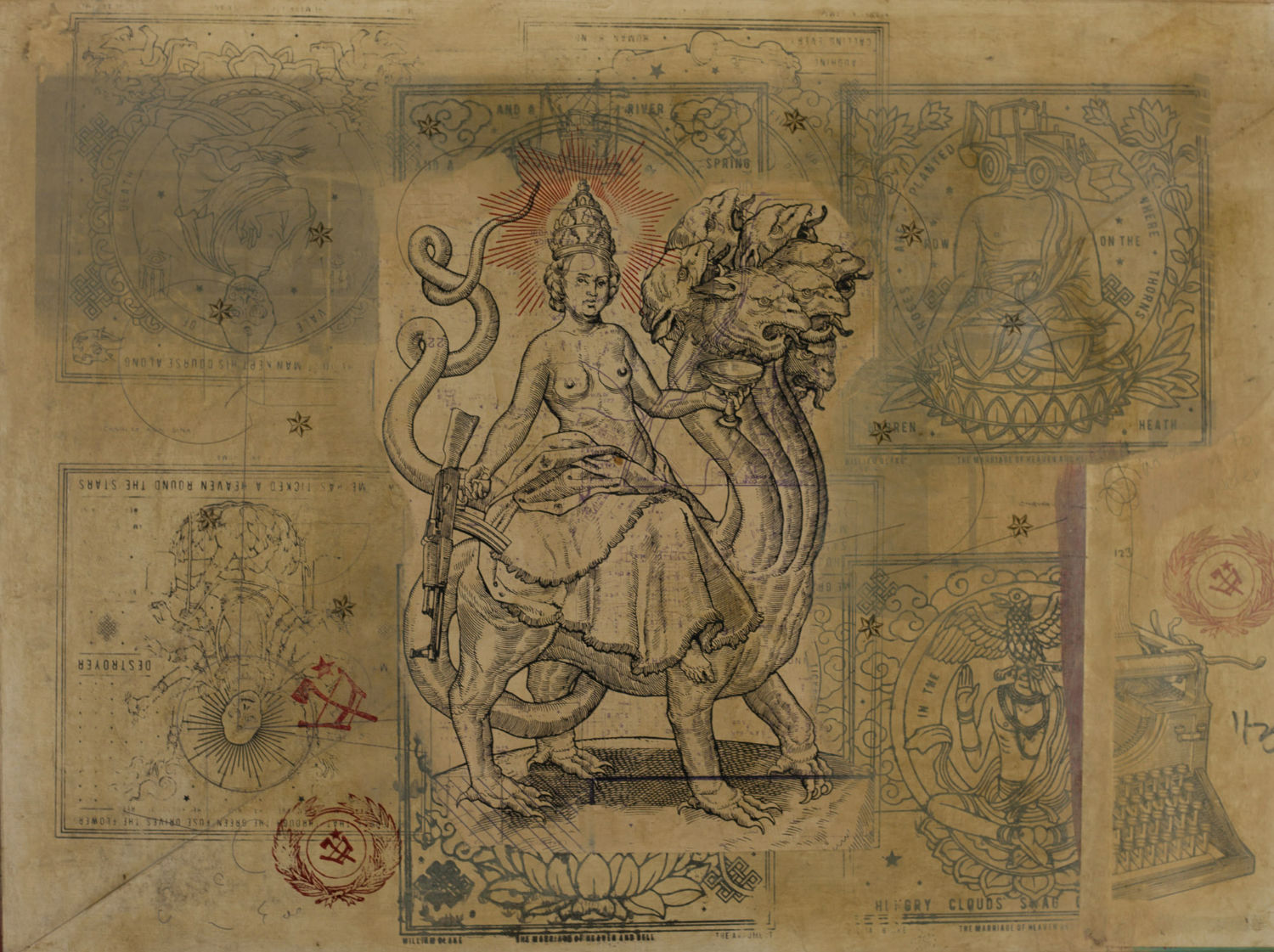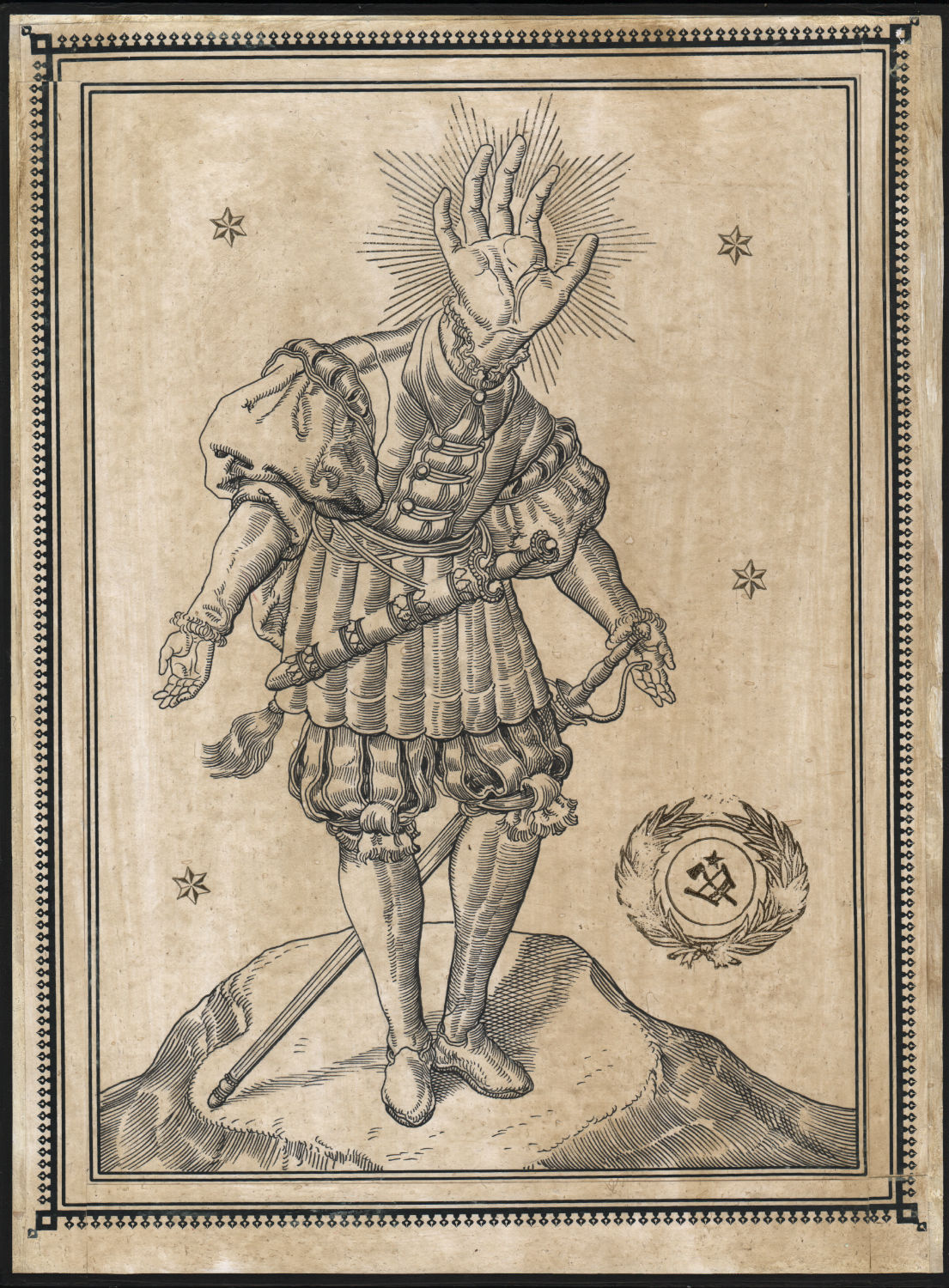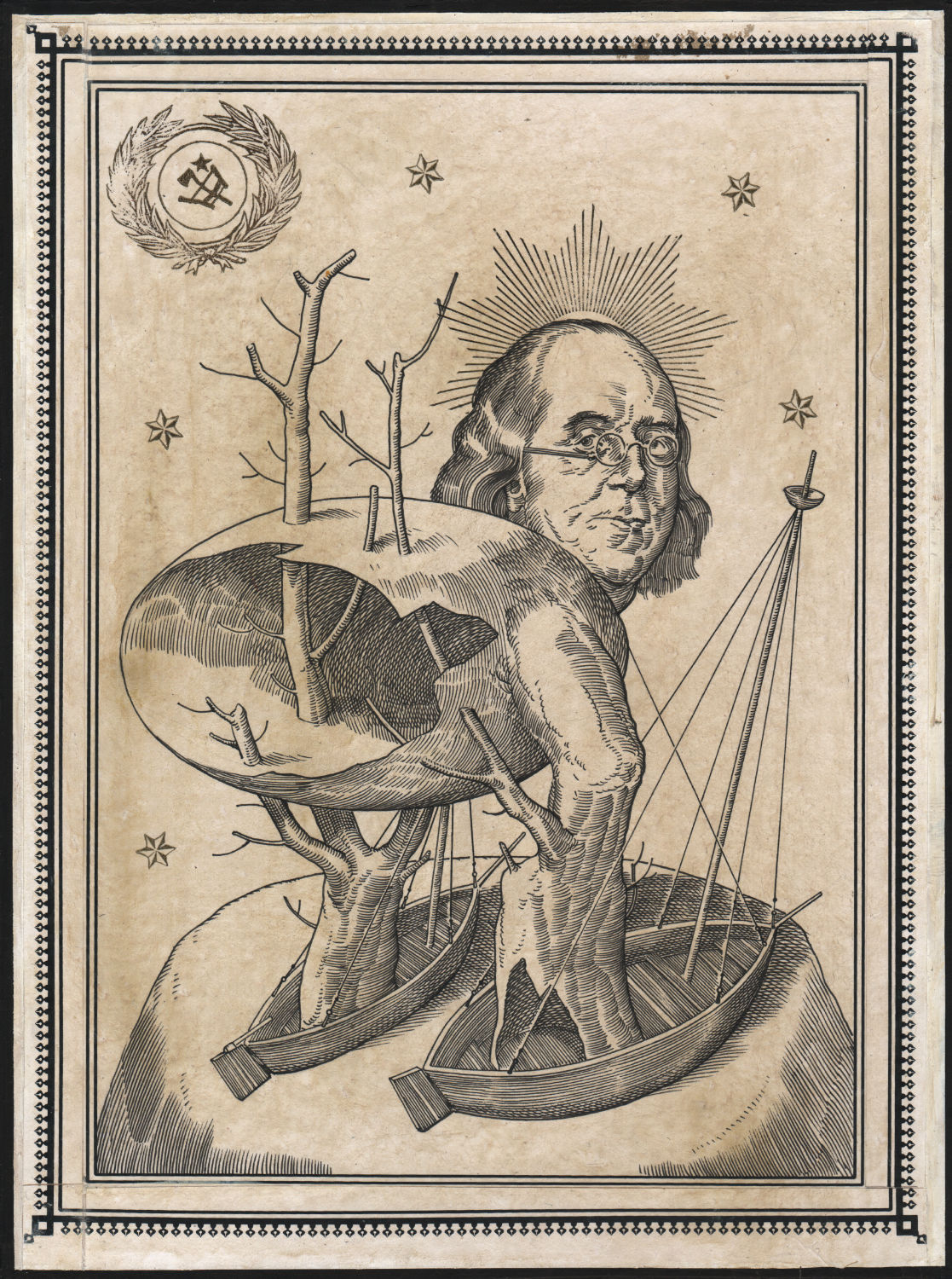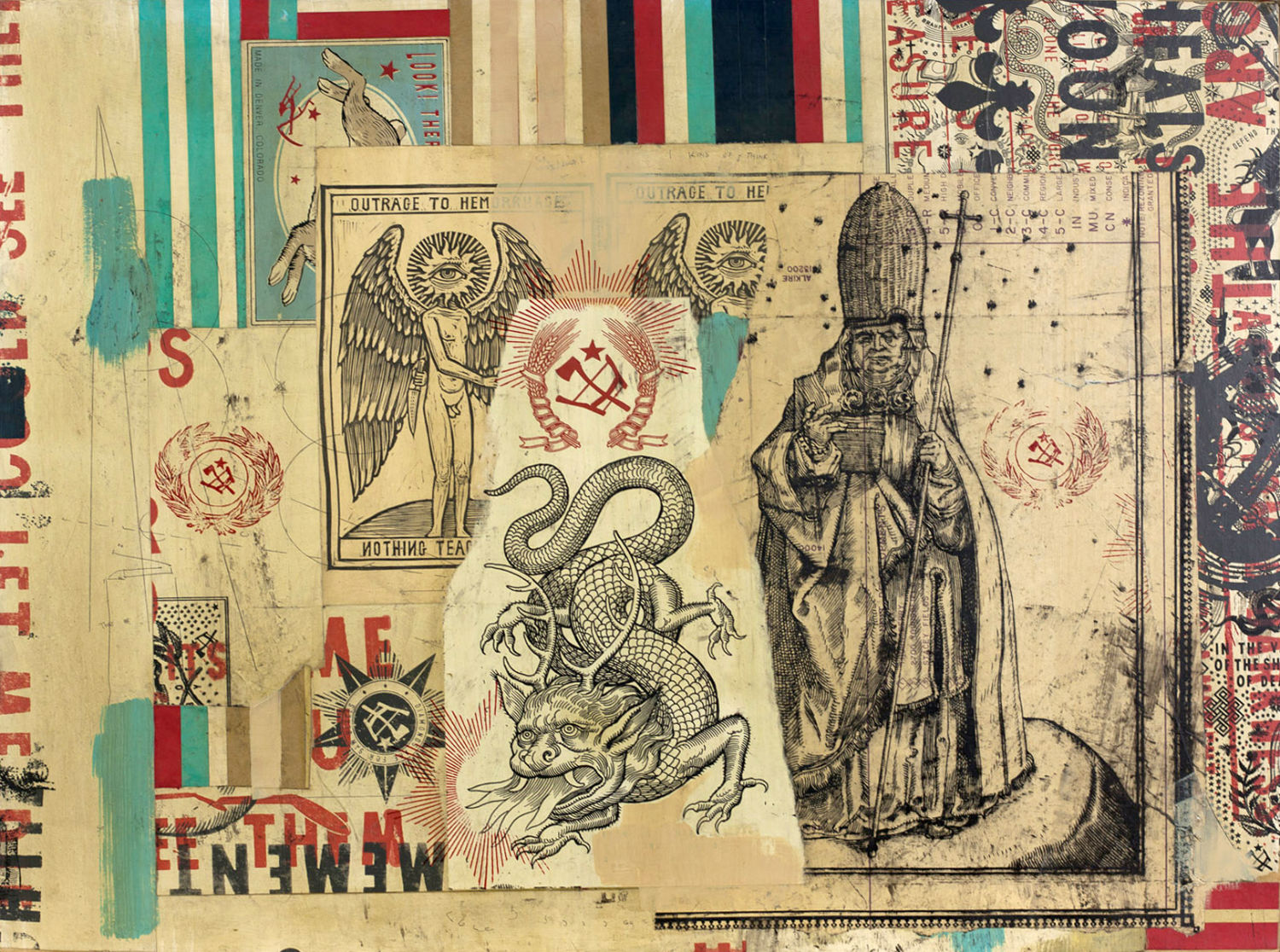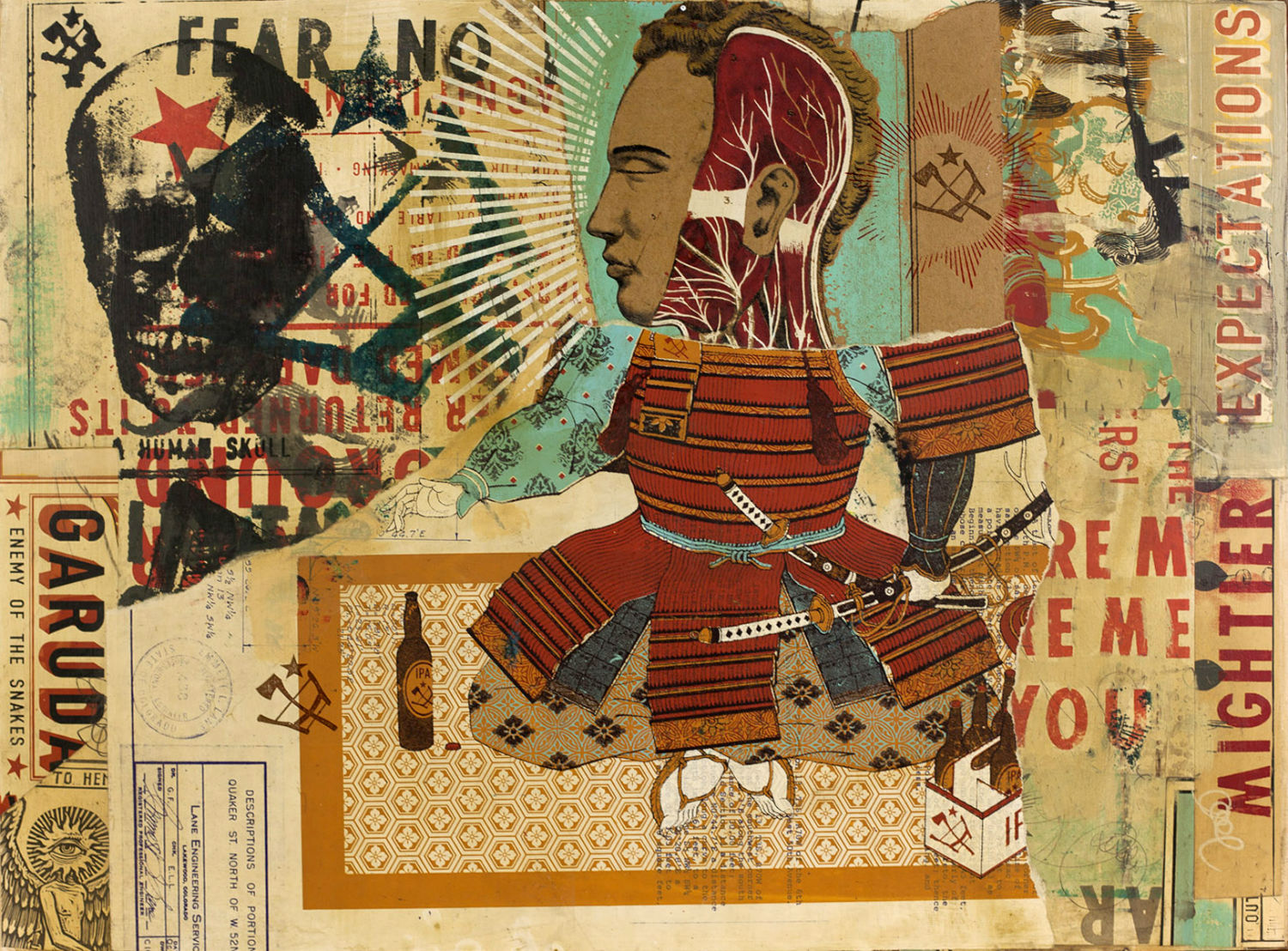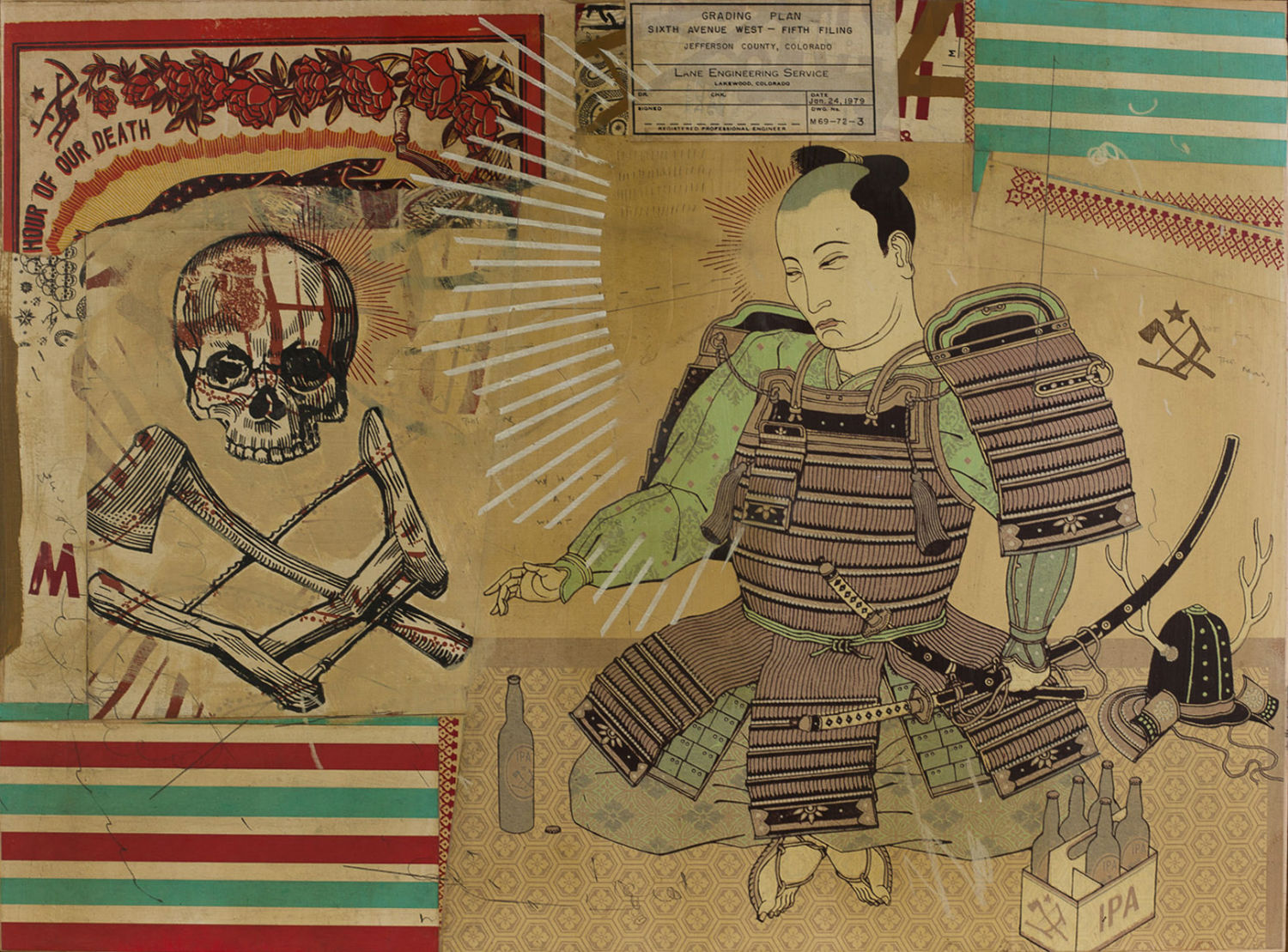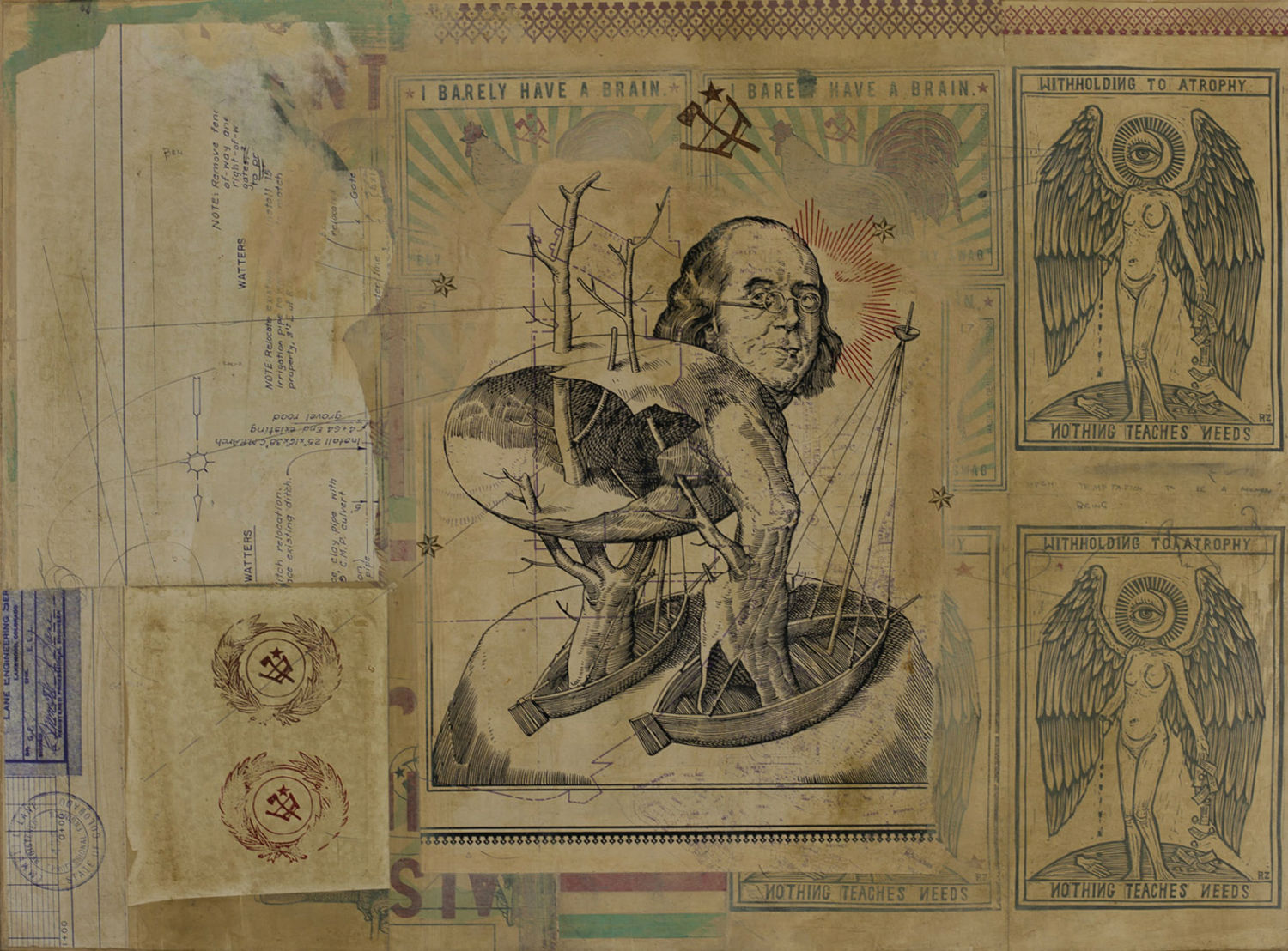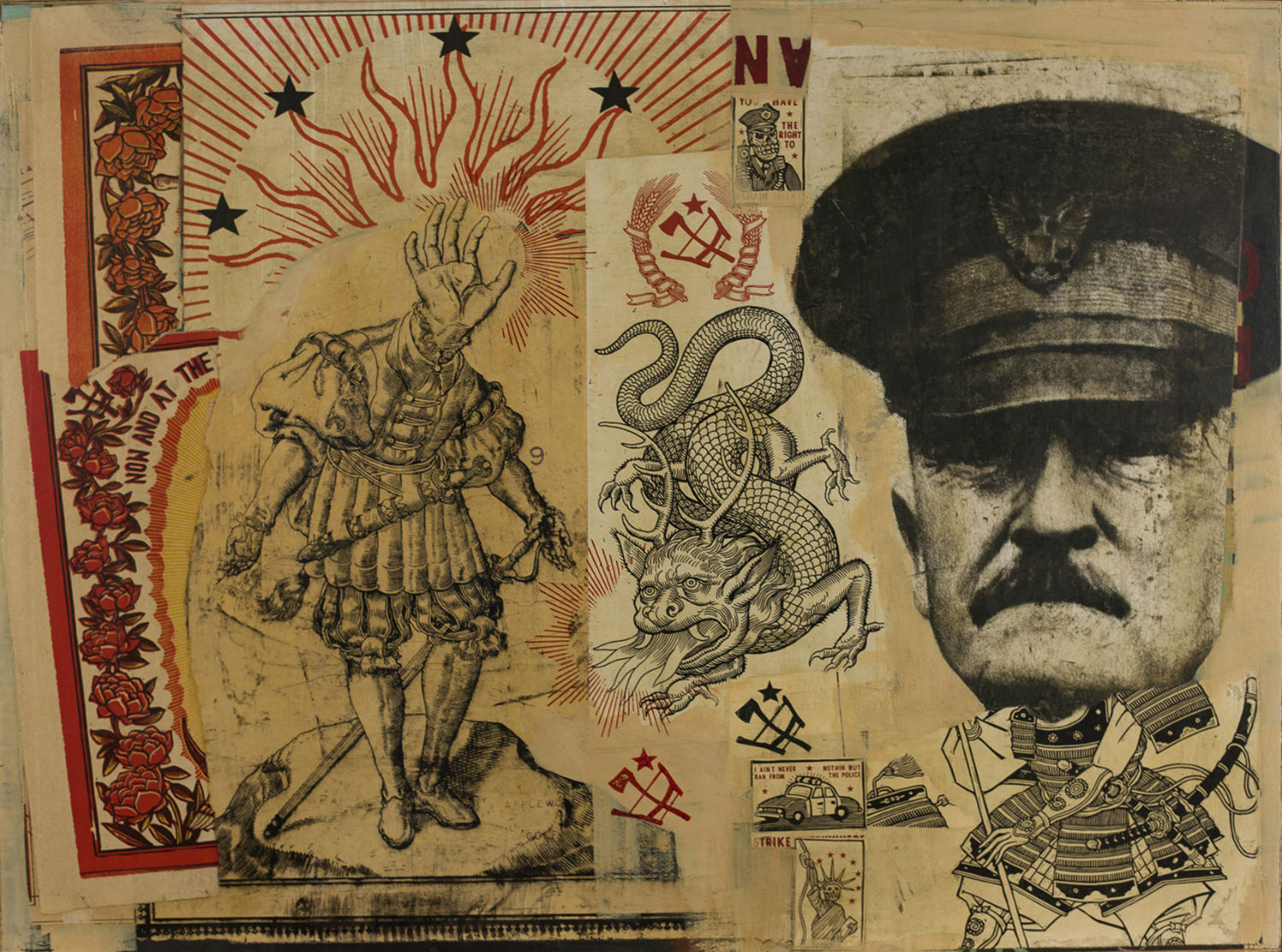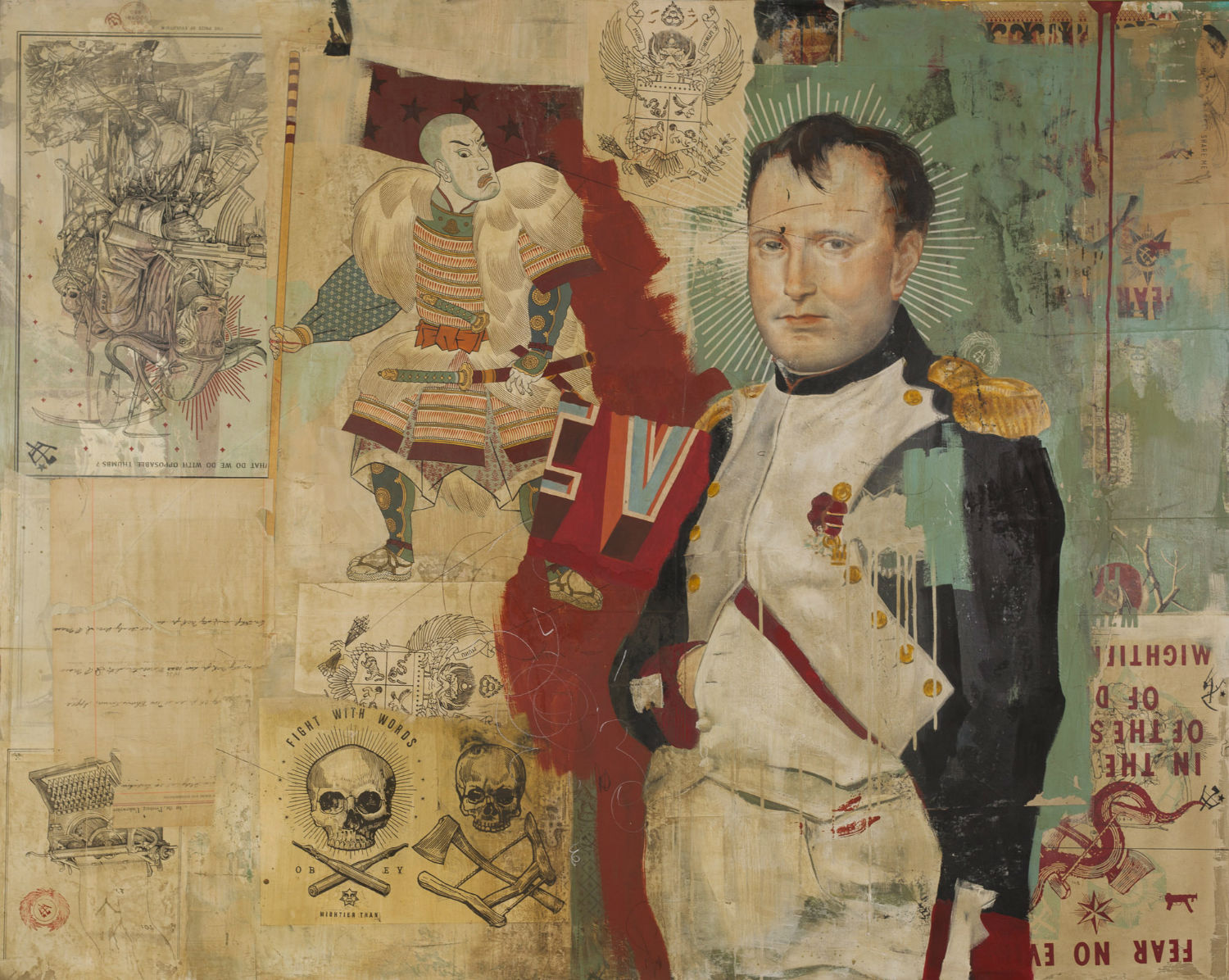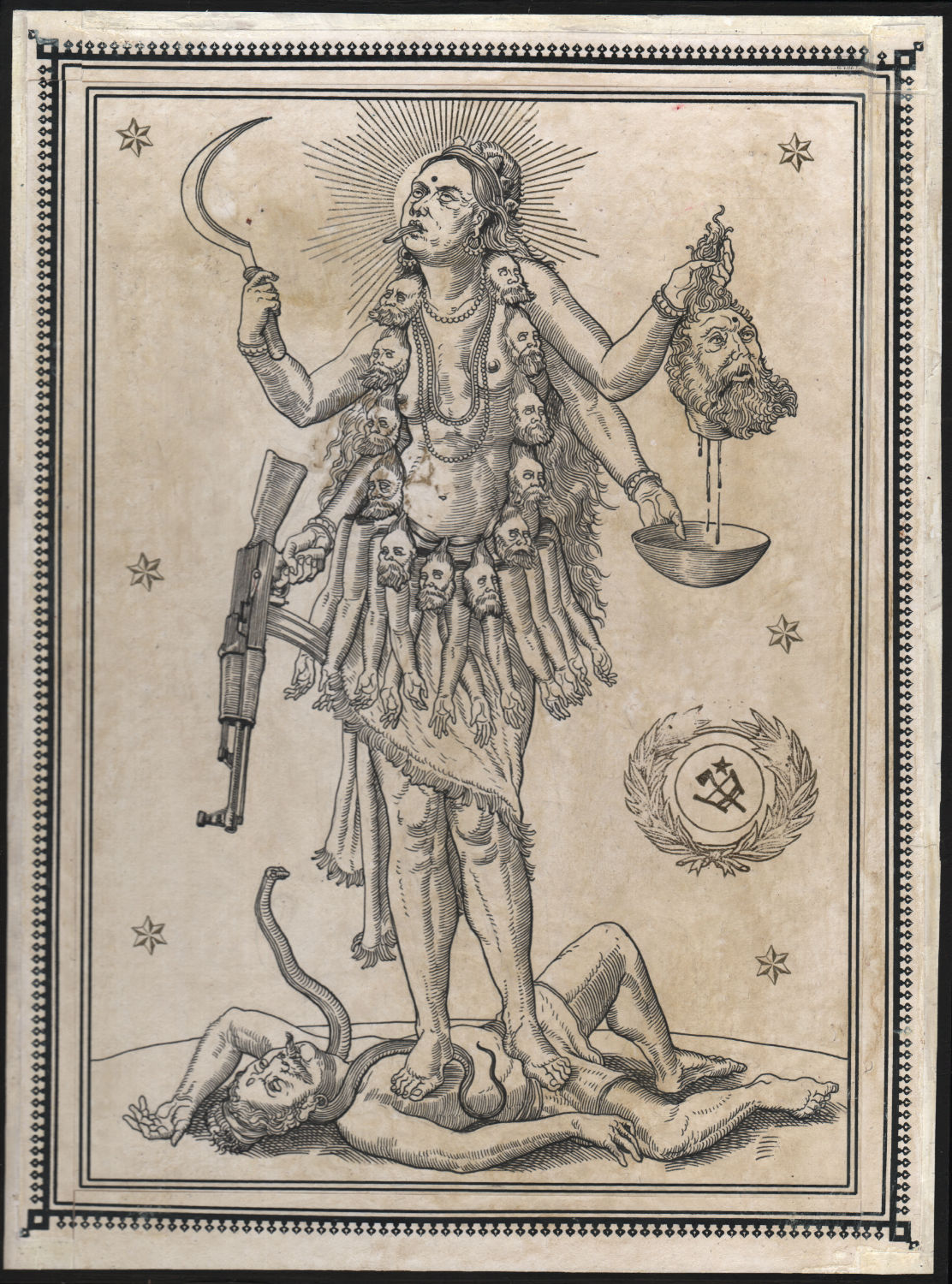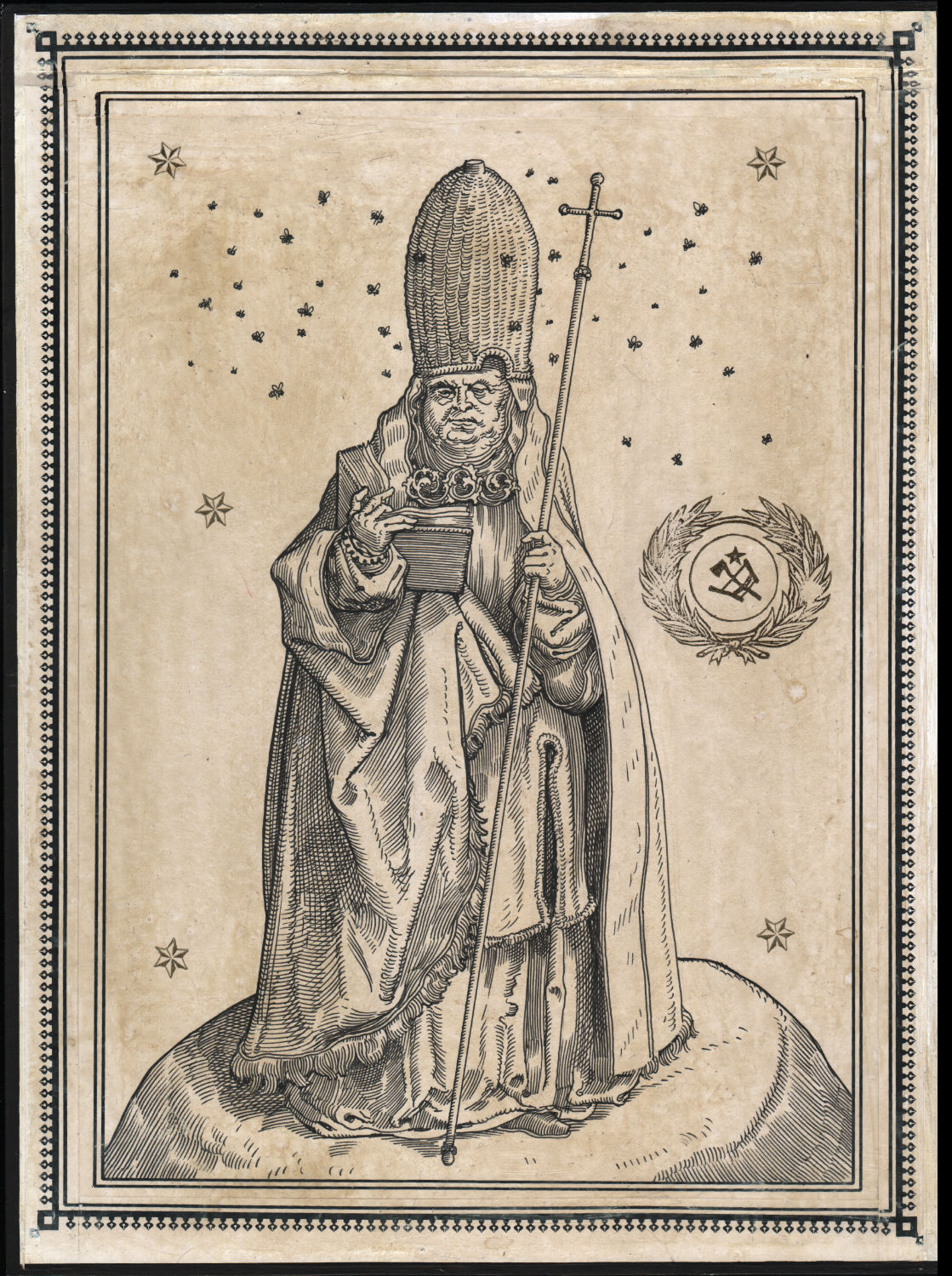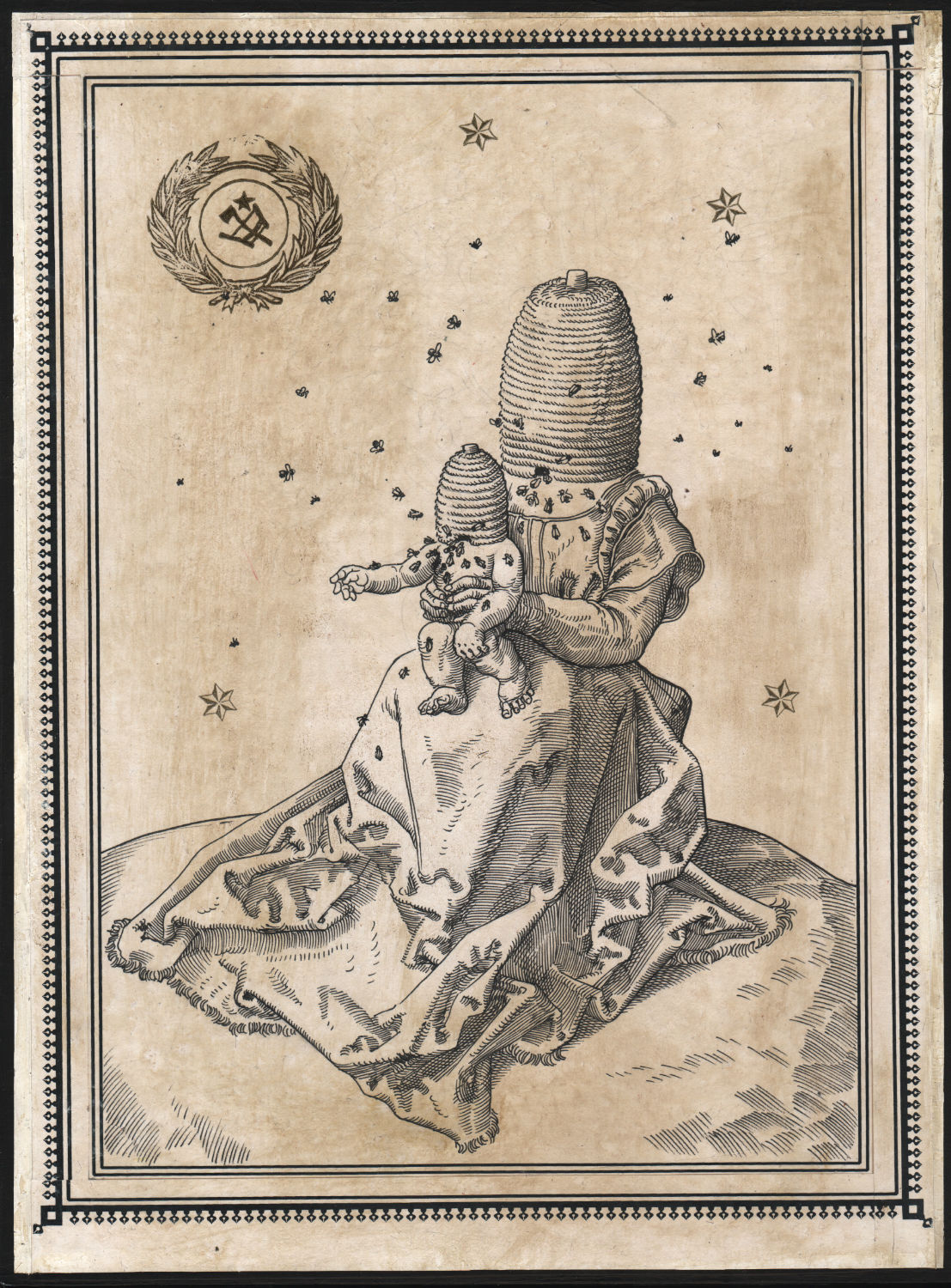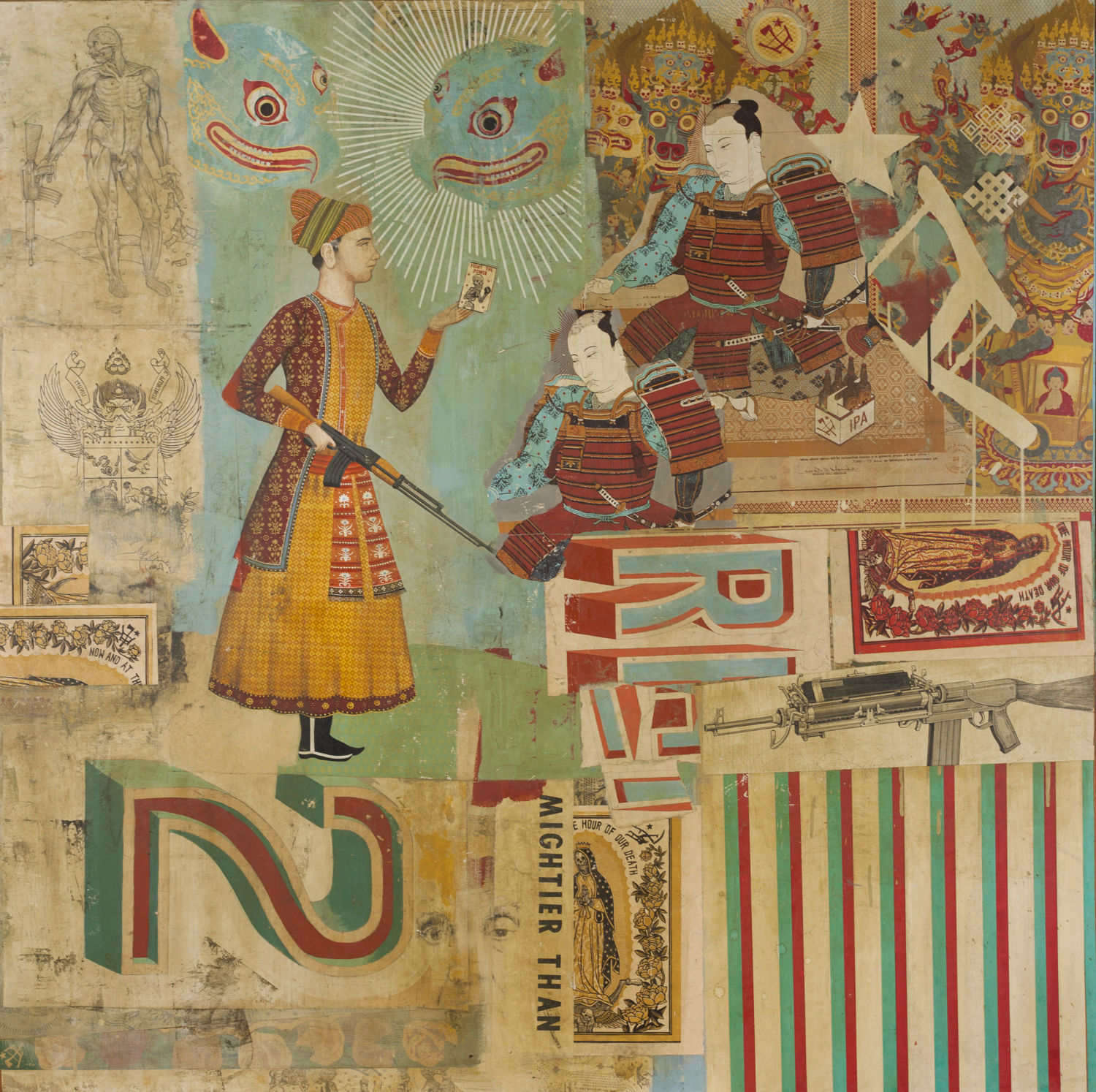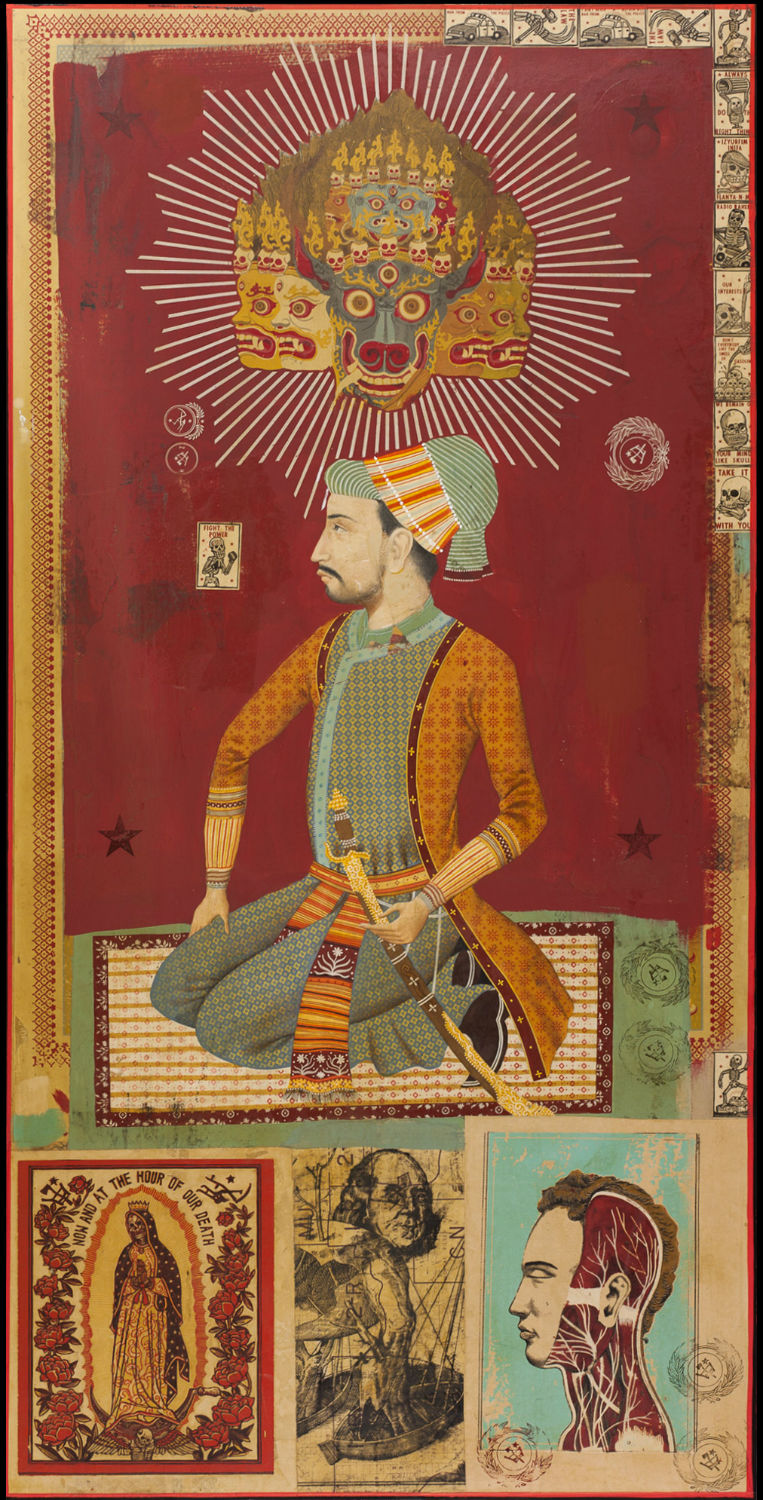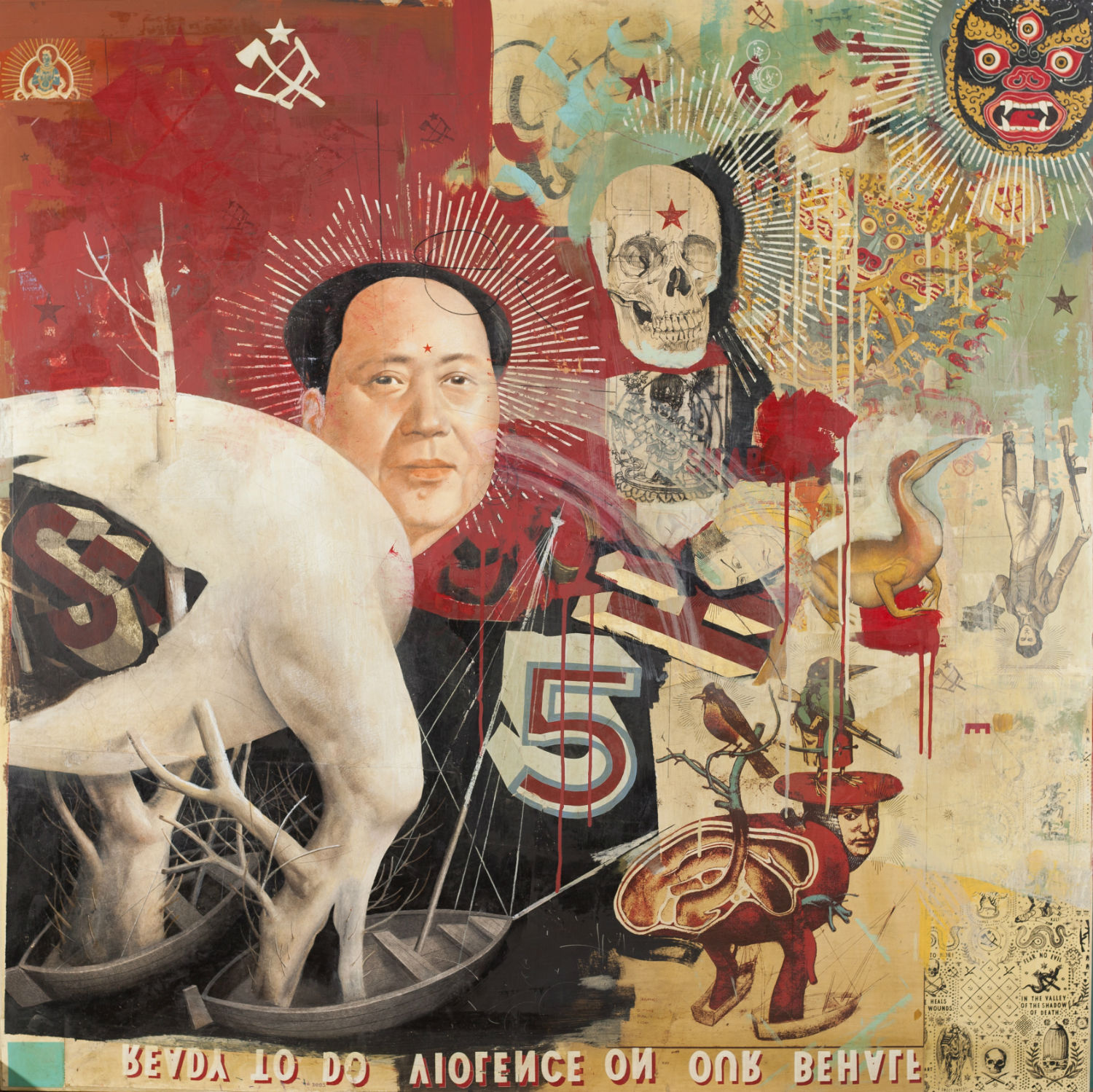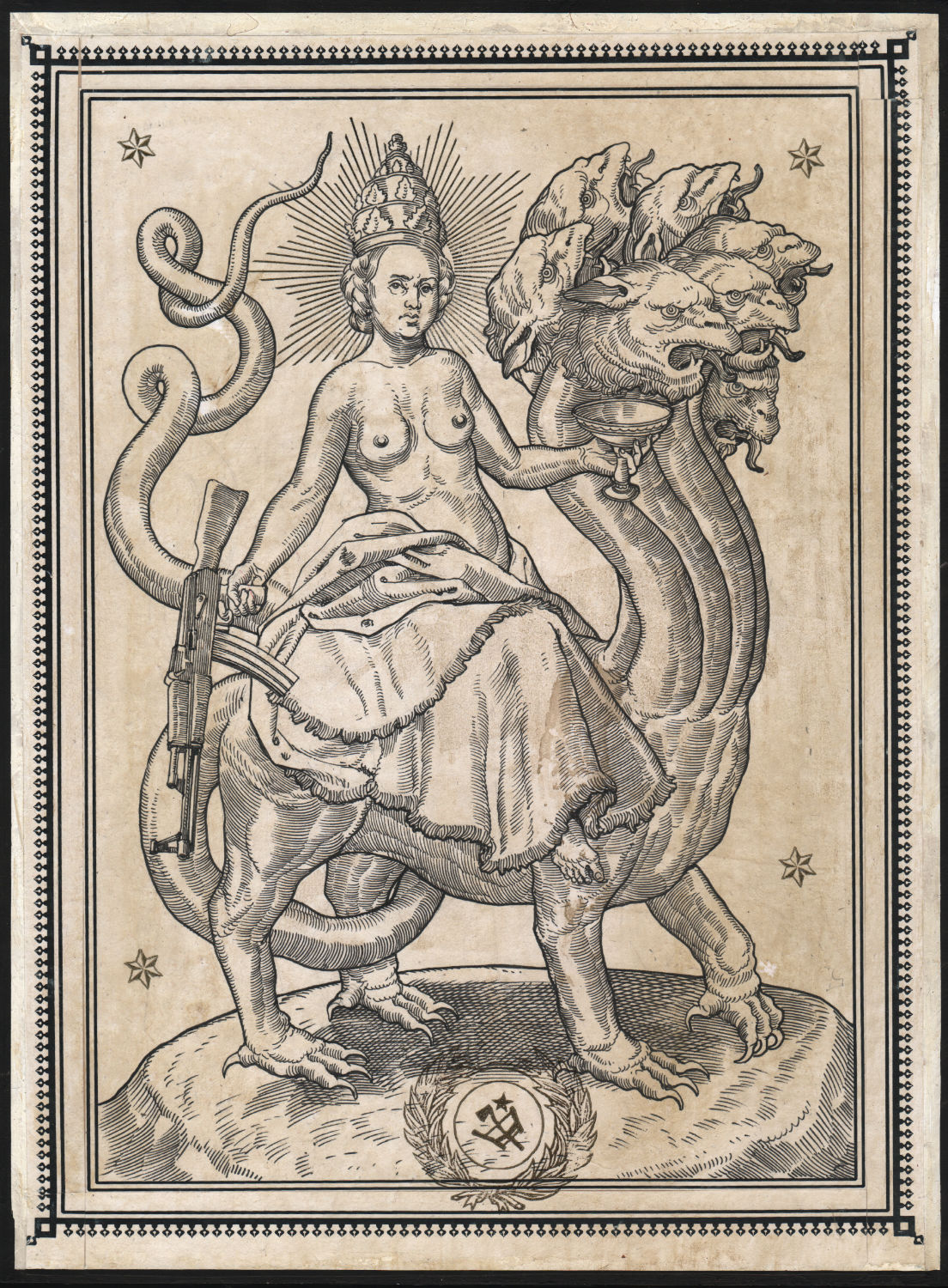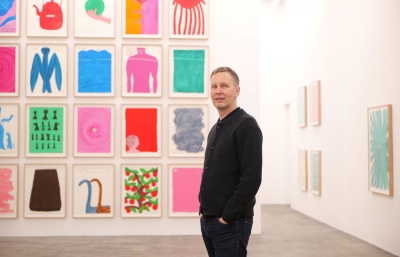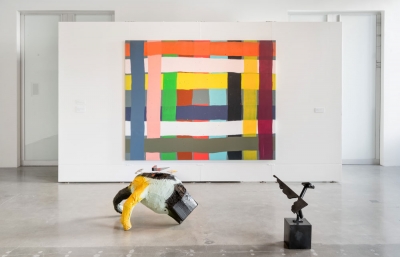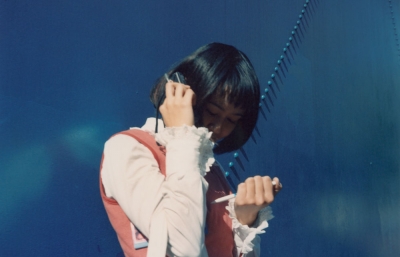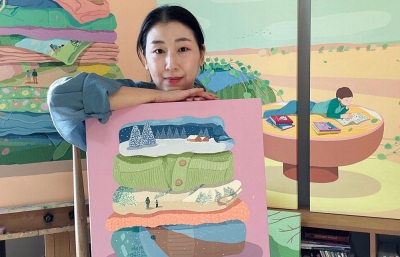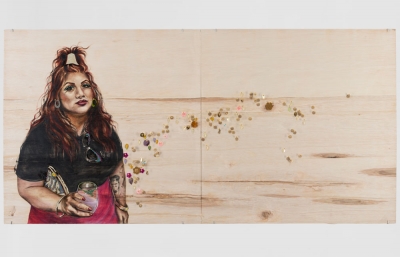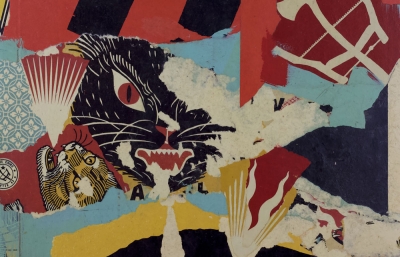Denver, Colorado-based artist Ravi Zupa blends eras, styles and themes into one canvas, often adding unexpected references to political dramas and pop culture icons. His newest show, Violence On Our Behalf, shows at Matthew Namour Gallery in Montreal through December 11, 2016. Ravi tells us about his work ethic, historical influences, and how he wants to be the singer in the band.
Politics in Process
Ravi Zupa: It’s hard not to think about politics lately. I’ve always put a lot of thought toward politics, anarchism especially. Outside of art, certainly the person with the largest influence on my way of thinking, aside from my mother, has been Noam Chomsky. Many of the artists who have influenced me the most infuse their work with a lot of politics: Franz Kafka, George Orwell, Pink Floyd, Kurt Vonnegut, Tupac, Goya, Chapelle, Kubrick, and Spike Lee, to name a handful. They use politics as a strong active ingredient, often with an explicit agenda, and they necessarily make the politics shout too loudly. It can weave into the fabric of the art in subtle and quiet ways but still be extremely important, much like politics laces itself secretly into the fabric of our actual everyday lives. Understanding all kinds of political and religious ideologies is one of the best tools that we have for understanding our own minds.
On the History of Cinematic Painting
For the most part, before the Enlightenment, western art had to be state or church sanctioned, so it often told a lot of the same old stories, though obviously there are many exceptions to this. Bruegel the Elder, for example, loved and celebrated the peasants of his time. But the Enlightenment allowed the common sense and reason of regular people to supplant the authority of kings and bishops to some degree. So you get people doing much more subversive work that expresses their own interpretation of contemporary social events. Goya is the greatest, in my opinion.

People have always injected their own contemporary world into older narratives. Biblical scenes from the Middle Ages and Renaissance, for example, invariably portray subjects wearing the European fashion of that time, which I think is really great. I love the blue-eyed, blond-haired Jesus for the same reason, but I also love all the depictions of Jesus—European, African, Japanese and Mexican. Since the Jesus we are familiar with was definitely not a literal human being that existed, these ethnically varied versions are the most accurate because they look like the face of the person painting them. I’m a big advocate of making art that reflects the world that shapes us and that we live in. Horses, for example, might sometimes be replaced by automobiles if the horse is meant to signify travel or convey a vehicle. Otherwise, the image doesn’t lodge in the viewer’s mind. Horses are no longer a visual vocabulary for vehicle. Similarly, swords no longer mean violence. They might mean honor or a symbolic form of justice, and so on. If the piece is meant to deal in some way with actual human violence, then using a sword is unlikely to engage the mind of the viewer, resulting in a disappointing piece.
Orwellian Thought
Like most, I’ve had politics on my mind a lot and watched the election closely, and it does feel like we are at a significant turning point in the way power moves and operates in our world. It’s a shift, potentially larger than the Renaissance or Industrial Revolution, and our world and mindset will be left forever altered. This election seems to have been a reflection of our collective attempts to make sense of this shift. The title of my new show, Violence On Our Behalf, is a slightly altered paraphrase of a George Orwell quote, “People sleep peaceably in their beds at night only because rough men stand ready to do violence on their behalf.” These new pieces deal with power and powerful people, and like all of my art, are an attempt to investigate a world of interconnected cultures and ideologies.

On Heroes
I can comment on this in a few ways. First, my mother has had a very strong impact on the way I make and think about art. She’s by far one of the most intellectual, combative and thoughtful people I know, and I’ve been shaped by that a great deal. She takes art very seriously. She’s really offended by bland aesthetics and unethical ideas in art. Second, there are a lot of artists that inspire me with their craft and dedication to morality: David Lynch, Marlene Dumas, Kendrick Lamar, Missy Elliott, David Byrne, and Robert Rauschenberg. Shepard Fairey also had a big impact on me. Aside from inspiring aspects of my art at a critical moment in my development, he’s also been such a good, supportive friend. He’s a great example. It can be difficult to remain focused with a lot of projects, talk to people about your art, be mentally present at openings, conduct business, price work and all. He’s completely unafraid of all of these things and does them with respect, fairness and confidence. He does them according to his own set of ideals and infuses the same kind of creativity and joy into his business that he puts into his actual pieces of art. He’s really helped me a lot in understanding my own methods and trajectory.
Studio Practice and Soundtrack
I work a lot. My hours are constantly shifting. I often work all night long and then go to sleep when the sun rises; other times my schedule is more like the rest of the world. Lately, I listen to political talk. I find rap music to be the best motivation. It’s got such inspiring, grinding movement, but it’s also made by some of the most powerful and articulate human beings on earth—people who had nothing, who grabbed handfuls of that nothing and sculpted it into some of the most magnificent, intellectual art the world has ever seen. It’s hard not to be motivated by that.

The Wild Wild West
Denver is growing faster than almost any city in the U.S., like it’s changing weekly. As far as the particular art crowd that we’re part of, there are a lot of people trying new things and integrating themselves into the city. Black Book Gallery is holding it down in a big way, and Mike Giant moved to town not long ago. Denver is a really unique place; it’s a bit hard to explain. My friend, Yoni Wolf, of the band Why?, who used to tour the world almost continuously, once said that Denver is the craziest, most stressed-out, on-edge city he visits. “It’s some kind of leftover, Wild West mentality,” he would say, and he’s kind of right. There’s a strange kind of aggression in the air but it’s not dangerous here. It’s just, at times, psychologically odd and urgent. It’s also very liberal and relaxed and trusting. I like the weirdness of it. I’ve become a bit reclusive recently. My neighborhood has a lot of homeless people, who are kind of the only people I hang out with lately (aside from my wife), and I love them very much. I have these wild all-night adventures getting to know them. They’re one of my favorite parts of Denver.
If You Could Be In One Band...
I really wish I could sing. I’d probably want to do something like Ween. I love the surrealism and how seriously they take it. You can hear the profound love they have for each other and how difficult the partnership is.
Dream Scenario
If I had the chance to study art in one place, I would choose any large city with an economically diverse population: Buenos Aires, Beijing, Lagos, Tehran. This way I would get a chance to see the celebrated, fine art of that culture, the paintings in gilded frames displayed by the aristocracy. I love that stuff. But I’d also get to see how beautifully regular people surround themselves with art. How they hand-paint signs with images of Ho Tai or Vishnu or Quetzalcoatl to advertise fruit stands and nail salons and tire dealerships. Or how they make locally printed church propaganda and wrappers for their own candy and matches. There is so much beautiful art on this planet.
----
Originally published in the January 2017 issue of Juxtapoz Magazine, on newsstands worldwide and in our web store.

